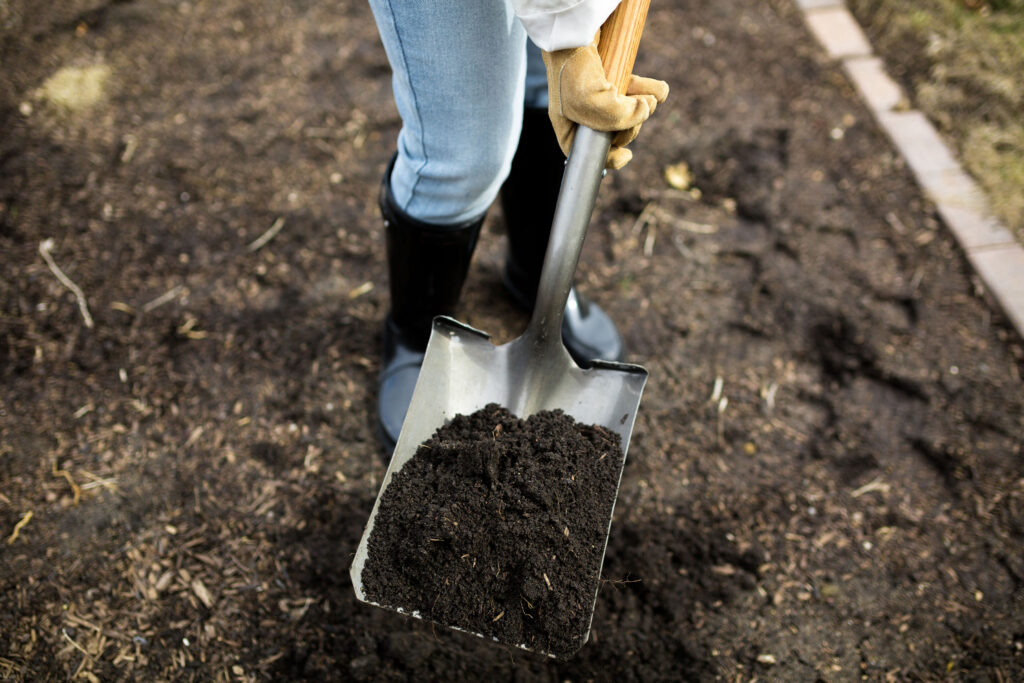Whether you’re a seasoned gardener or just delving into the world of gardening, a good Fall Gardening checklist is essential. That may come as a surprise, especially to those just beginning their green thumb journeys. But think of Fall gardening as a pre-season. It’s all about the clean up and preparation to have a bountiful season… next year. Your garden can serve you with a beautiful atmosphere, home-grown food, sights and smells for many years to come. To ensure year after year of success don’t skip the Fall work!
We here at Emerson Wild have curated the ultimate to-do list, to keep your gardens happy and healthy.

The Emerson Wild Fall Gardening Checklist
Before we get started, we have to note that we are located in Canada. Our winters are harsh and much of our gardening is dependent on the first and last frosts of the year. We see a growing season of approximately 135-145 days per year. That being said, information about your local first/last frosts are readily available online. You can adjust your own list accordingly based on the estimated dates.
Vegetable Gardens
- Make note of your current garden set up, what’s planted where – it’s always a good idea to rotate your vegetables when possible – this is the practise of changing what you plant where to ensure your soil quality remains high
- Collect seeds, trim any remaining herbs to bring indoors for cooking/drying
- Remove any weeds (you may get muddy, but the best time is always after a rainfall when the ground is soft)
- Clean out beds, including any remaining fruits or vegetables – this helps to avoid any volunteer plants the following year. Volunteer plants are those that are not deliberately planted by you (tomatoes are a big culprit here)
- Add manure and organic matter and till your beds. The aim of tilling is dig, stir and overturn the soil in your beds. This helps remove any remaining root systems and aerate the ground while improving soil conditions
- Thinking of expanding your gardens? This is a great time to plan ahead and either smother grass or to add in raised beds, ready for next year.
Annuals and Container Gardens
- Just like with your vegetables, make note of what you’ve planted where, to switch it up next year
- Collect seeds of flowering plants, take cuttings, and dig up any tender bulbs that can’t survive your winters. Store any bulbs and seeds in cool dark places and cuttings can be grown in water (and potentially make it to next spring)
- Clean out any seasonal containers, removing any remaining foliage or debris along with soil – as the soil in the containers thaws and freezes in late fall/early winter, your containers become susceptible to cracking and breakage. This is especially true for any clay/terracotta pots
- For any all-weather proof containers, clean out the summer material (plants – including any roots) and top off with fresh soil to get your winter/holiday container ready.
Perennial Beds
- Plant new perennials at least 6 weeks before your first frost – yes, you read that right, the autumn is an excellent time to plant new perennials as they can take that time prior to the frost to establish strong root systems without having to worry about producing flowers/fruits
- Remove weeds and clean up any remaining fall debris and continue to water your perennials until the ground freezes (this is really helpful for those root systems that are preparing to make it through the winter months)
- Plant your Spring-flowering bulbs when your the ground is still workable and the evening temperatures are between 5-10˚C – if you’re planting more than one kind of bulb, take into consideration their blooming times. The later in the spring that you have blooms, the deeper in the ground they can go – you can even use the “lasagna method” which stacks bulbs right on top of one another
- After the ground is freezes, add a heavy layer of mulch – this is another layer of protection against the plummeting temperatures
- Following your first frosts, trim and prune your perennials, removing any diseased or dead branches
Lawns, Trees & Shrubs
- Rake and remove all those fallen leaves, more than once if you have to, your grass will thank you!
- If you’ve had a dry summer, the cooler temperatures of fall and the hopefull increase in rain make it an ideal time to add grass seed to replenish areas that suffered over the summer
- Be sure to water trees/shrubs until the ground is frozen – Once all the leaves have fallen off your trees/shrubs, prune them back for next year
- Replenish or add mulch around the bases of your woody plants, always being careful not to touch the trunks
General Fall Gardening Maintenance
- Prepare your garden hoses for next year, drain water and store indoors
- Bring in any gardening tools and give them a good cleaning, plus sharpen any blades
- Collect any remaining vegetable/floral tags or markers, stakes, lattices or supports – clean and store
- Drain and clean out any water features

From our team here at Emerson Wild we hope you have a wonderful Fall gardening experience. If haven’t yet subscribed, sign up for our email list to receive exciting new updates from us. And, be sure to follow with us on Instagram and on Pinterest where we are always pinning the latest trends on all things garden and home.



